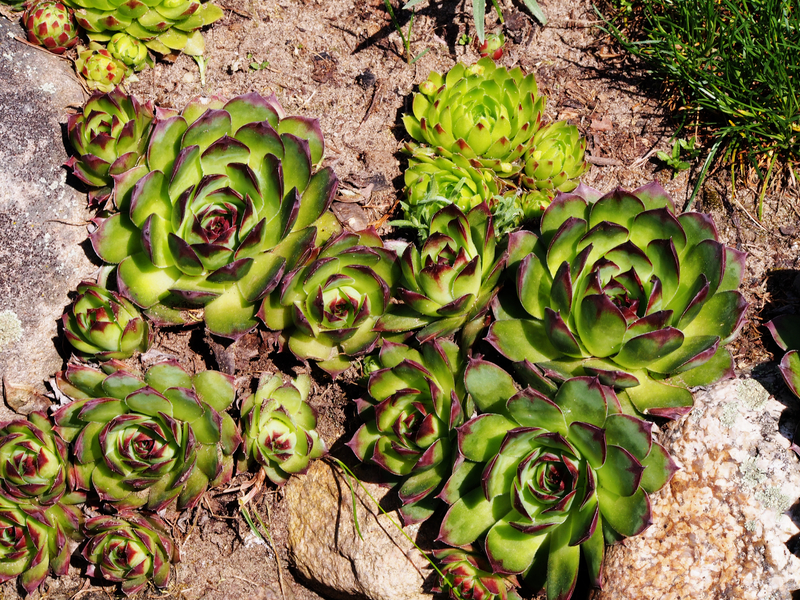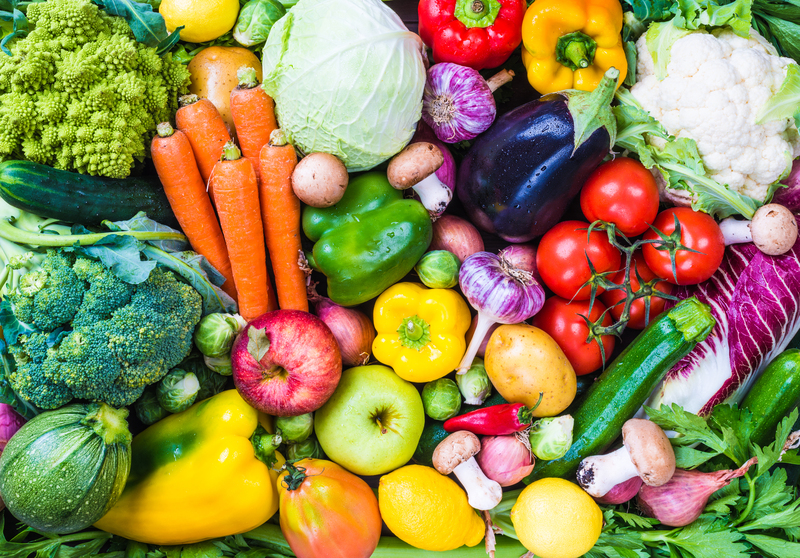Transforming Your Garden into a Child's Playful Sanctuary
Posted on 26/06/2025
Transforming Your Garden into a Child's Playful Sanctuary
Are you looking to transform your garden into a magical, playful oasis for your children? With a few creative ideas and thoughtful planning, you can reinvent your backyard into a safe and stimulating playground that inspires adventure, learning, and joy. In this comprehensive guide, we'll explore tips, inspirations, and practical advice to help you convert your outdoor space into a child's playful sanctuary--a place where imaginations soar and childhood memories bloom.
Why Create a Playful Sanctuary in Your Garden?
Children thrive in environments that encourage exploration, creativity, and active play. Gardens are the perfect setting for such activities. By transforming your outdoor area into a child-friendly garden, you provide a secure and exciting space where kids can stay healthy, develop social skills, and engage with nature.
Benefits of a Child-Centered Outdoor Space
- Physical Development: Running, climbing, and jumping promote motor skills and coordination.
- Mental and Emotional Growth: Nature stimulates curiosity, problem-solving, and emotional resilience.
- Family Bonding: Outdoor activities foster family interactions and quality time together.
- Connection to the Environment: Children who spend time in gardens develop a lifelong respect for nature.

Planning Your Child's Playful Garden Sanctuary
The first step in transforming your garden is to plan carefully. Consider your children's ages, interests, and safety needs. It's essential to balance fun elements with safety and appeal to a wide age range if possible.
Assessing Your Space
- Size and Shape: Take measurements and note sun and shade areas.
- Existing Features: Identify trees, shrubs, slopes, or insect-prone spots.
- Accessibility: Plan for easy access from your home for supervision and convenience.
Setting Priorities and Themes
Ask your children for ideas and involve them in the decision-making process.
Popular themes include:
- Fairy-tale forests
- Adventure jungles
- Pirate coves
- Miniature farms
- Science and bug exploration zones
Tip: Combining different themes in zones can keep your garden exciting as your children grow!
Key Elements for a Playful Garden Sanctuary
Transforming your garden into a child's playful sanctuary requires thoughtfully selected elements that encourage active and imaginative play. Let's explore essential features you can incorporate:
1. Active Play Structures
Physical activity is crucial for children's growth. Adding safe play equipment turns your outdoor space into a dynamic playground.
- Swings and Slides: Classic favorites, these never go out of style. Consider trees with sturdy branches for natural swings.
- Climbing Frames, Monkey Bars, and Rope Ladders: These structures develop balance and coordination.
- Zip lines (for older children) and simple obstacle courses add extra excitement.
- Sandpits: Great for tactile play and creativity--don't forget shade covers!
2. Imagination and Creativity Zones
- Playhouses and Forts: These spark storytelling and role-play--customize with pirate flags, fairy lights, or camouflage netting.
- Mud Kitchens: Outdoor cooking and pretend play enhance sensory exploration.
- Art Spaces: Set up weather-resistant easels, chalkboards, or a wall for mural painting.
- Themed areas, like dinosaur digs or enchanted fairy circles, nurture creative narratives.
3. Sensory Gardens
Sensory experiences are vital for children's development. A sensory garden stimulates touch, sight, sound, taste, and smell.
- Fragrant Plants: Lavender, mint, and rosemary to encourage sniffing and tasting (ensure all plants are non-toxic).
- Tactile Surfaces: Alternate grass, pebbles, bark, and sand for a barefoot-friendly landscape.
- Wind Chimes and Water Features: Add soothing natural sounds.
- Visually Attractive: Brightly colored flowers and decorative objects draw interest.
4. Nature Exploration Zones
- Bug Hotels: Encourage curiosity with wooden insect habitats.
- Pond or Mini Wetland: Safely fenced aquatic zones for frog and bug spotting.
- Vegetable Plots and Herb Gardens: Teach life cycles and encourage healthy eating.
- Tree stumps and log piles become natural playgrounds and attract wildlife.
5. Quiet Corners and Retreats
- Reading Nooks: A hammock under shady trees or a tented corner for quiet time.
- Secret Hideouts: Teepees, willow domes, or tall sunflowers as living walls.
- Cushions and low benches for relaxation and conversation.
Safety First: Creating a Safe Play Environment
Before transforming your garden into a children's paradise, safety should be your top priority.
- Soft Surfaces: Use bark chips, rubber mulch, or artificial grass under play structures.
- No-Toxic Plants: Check every plant for toxicity, especially if your kids are curious nibblers. Avoid thorny or spiky species.
- Secure Fencing: Ensure your garden boundaries are child-proofed and gates are lockable.
- Visibility: Arrange play areas so you have a clear view of your children from your home.
- Water Safety: Fences and covers for ponds or water features. Never leave children unsupervised near water.
Lighting for Safety and Magic
- Solar Path Lights: Soft lighting for evening play.
- String fairy lights for atmosphere and navigation.
Five Steps to Designing Your Garden Playground
- Observe and Imagine: Watch how your children use your current garden and ask for their 'dream playground' ideas.
- Sketch a Plan: Map out zones for active play, creativity, nature exploration, and rest.
- Source Materials and Supplies: Repurpose old pallets, tires, or logs for eco-friendly DIY projects.
- Build and Plant Together: Involve your children in gardening, building, and decorating.
- Enjoy and Evolve: Let the sanctuary grow with your child's interests. Add or reimagine features over time.
Incorporating Eco-Friendly and Sustainable Features
A playful garden sanctuary can also be an environment-friendly space. Choose sustainable materials and encourage eco-awareness.
- Natural Building Materials: Use untreated wood, stones, bamboo, or recycled plastic.
- Compost Bins: Teach kids about waste and soil health.
- Rainwater Harvesting: Collect rainwater for gardens and water play.
- Native Plants: Attract pollinators and reduce maintenance needs.
Ideas for Small Spaces: Balcony & Urban Gardens
Even if you have *limited outdoor space*, you can still *create a playful sanctuary* for your kids:
- Vertical Planting: Use wall planters or trellis for climbing plants.
- Mini Sandpits or Water Tables: Portable and storable when not in use.
- Foldable Play Equipment: Compact slides, pop-up tents, or hopscotch mats.
- Container gardens for hands-on learning.
Inspiring Real-Life Child's Garden Sanctuary Ideas
The Enchanted Forest
- Winding woodland paths with stepping stones and fairy doors.
- Tree stump chairs and mushroom-shaped table for tea parties.
- Sunflower forts and willow tunnels for secret adventuring.
Pirate Adventure Cove
- Sand play area as a treasure island, with natural driftwood 'ships'.
- Map boards and hidden 'treasure' chests.
- Blue pebbles or colored mulch for 'sea' effect.
Mini Farmer's Patch
- Raised vegetable beds and mini greenhouses.
- Child-height watering cans and garden tools.
- Scarecrows made together as a family craft activity.
Seasonal Tips for Year-Round Fun
- Spring: Plant bulbs and flowers together to watch them bloom.
- Summer: Add shady canopies and set up splash play stations.
- Autumn: Leaf piles for jumping, nature treasure hunts.
- Winter: Bird feeders, cozy den-building, outdoor art with frost or snow.
Maintenance Tips: Keeping Your Garden Sanctuary Safe and Inviting
- Regular Inspections: Check play structures and fix any hazards.
- Hygiene: Cover sandpits to deter animals and refresh sand.
- Refresh Plants: Replace any damaged or toxic plants.
- Rotate Toys and Decorations: Change elements with seasons or your child's interests.

Frequently Asked Questions
What are the best plants for a child-friendly garden?
Lavender, sunflowers, strawberries, nasturtiums, and herbs like mint are great choices--they are edible, easy to grow, and non-toxic. Always research before planting!
How can I keep my garden safe for toddlers?
Use soft, impact-absorbing ground surfaces, pick non-toxic plants, fence the area, and avoid sharp or breakable objects. Supervision is always key.
Should I buy or DIY play structures?
Both are excellent options. **DIY projects** add personal touch and can save money, while store-bought equipment often offers enhanced safety features.
How can I encourage my child to spend more time in the garden?
Involve them in planning and maintenance. Add new surprises often--like a fairy door, hidden clues, or seasonal decorations--to keep their curiosity alive.
Conclusion: A Garden for Lifetime Memories
Transforming your garden into a child's playful sanctuary not only enhances your outdoor space but creates a treasured environment for growth, exploration, and family bonding. By blending imagination, safety, sustainability, and play, your garden can become the heart of magical childhood adventures and a place where lifelong memories are made. Start your garden transformation today--and watch your children bloom!
Ready to turn your garden into a play haven? Share your progress or ideas in the comments below!



